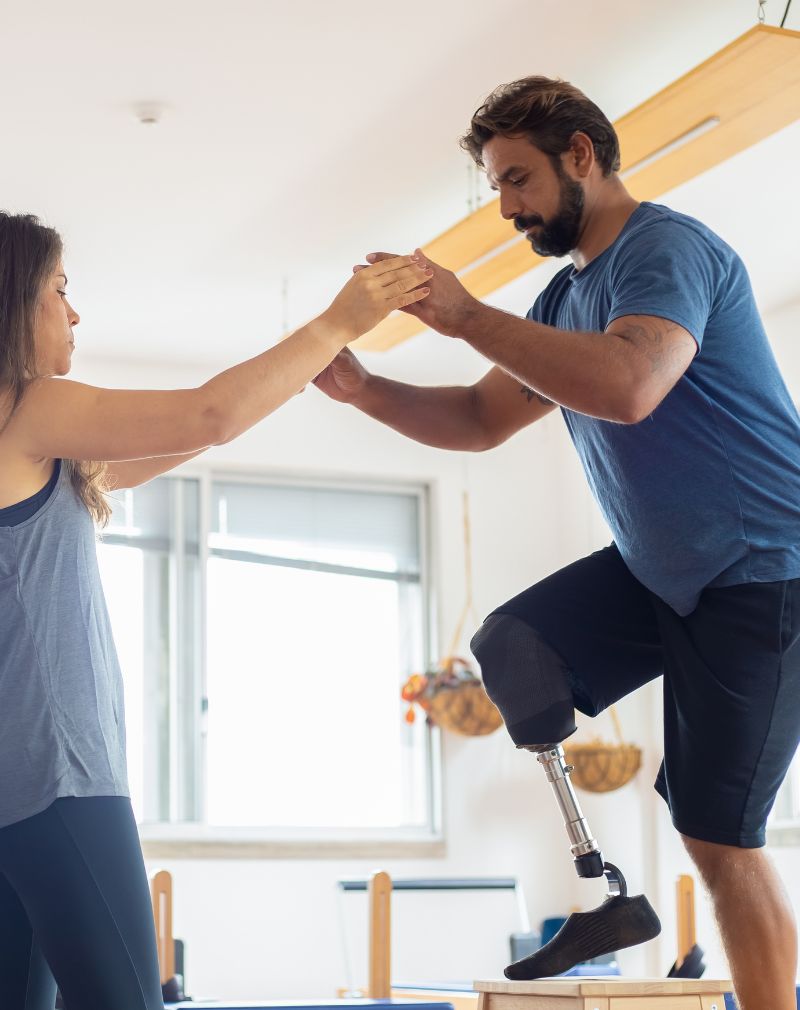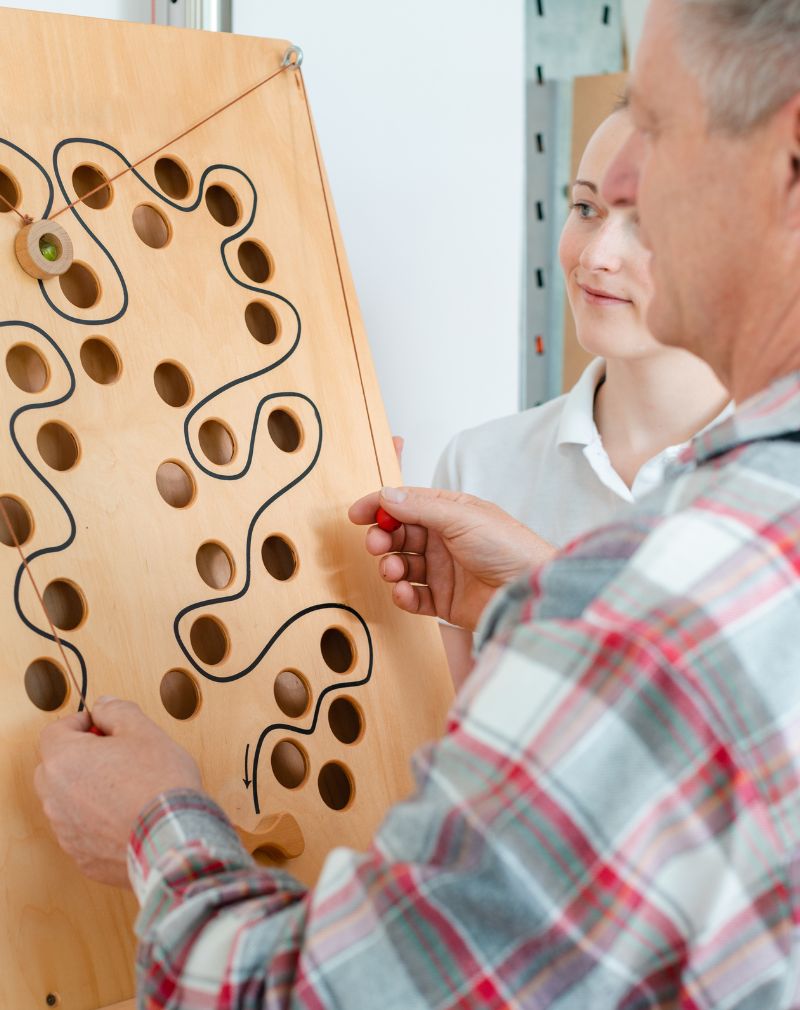Some people slip. Others strain. A few break.
But most just endure. Quietly.
They tape their knees, ice their backs, swallow painkillers, and keep showing up. Because bills don’t wait. Deadlines don’t care. And work won’t slow down for your injury.
By the time most people seek help, the damage is no longer new. It’s layered. Worn-in. Chronic.
In 2025 alone, workplace injuries drained over 450 billion dollars from businesses worldwide. Not because people were reckless. But because prevention came too late — or never came at all.
In the UAE, the number of workers reporting back, neck, and shoulder pain has spiked 14 percent. These aren’t rare cases. These are everyday bodies, breaking down under routine tasks.
At The American Wellness Center in Dubai Healthcare City, our Occupational Therapy Department sees what’s behind these numbers. Poor desk setups. Repetitive motions. Long hours with no movement. And we do something about it.
Occupational therapy isn’t just about recovery. It’s about helping people move without fear, return to work with confidence, and stop injuries before they ever start.
Whether you lift heavy boxes or scroll a mouse 8 hours a day: This matters to you.
Common Workplace Injuries in Dubai and Beyond
Workplace injuries don’t always come from accidents. Most of the time, they come from repetition.
The same chair. The same reach. The same bad posture day after day.
In the UAE, more than 60% of workers now report daily aches tied to how they sit, stand, or move on the job. Office workers blame their necks. Warehouse staff point to their backs. Healthcare professionals talk about shoulder pain that never really goes away.
Here’s what we see most at The American Wellness Center:
- The “Quiet Killers”: Repetitive strain injuries — from typing, scanning, lifting, reaching. It adds up faster than you think.
- The “Desk Back”: Lower back pain remains the number one reason for global sick leave. It’s not just manual laborers. It’s anyone with a chair that doesn’t fit their body.
- The “Fast Fall”: Slips and falls, especially in hotels, hospitals, and kitchens. One wet floor can derail months of movement.
- The “Not Yet Ready”: People pushed back to work too soon after surgery. They return, but they’re not functional. They’re just present.
Pain at work is common. But that doesn’t mean it’s normal.
What Is a Return-to-Work Program?
Getting back to work after an injury shouldn’t feel like punishment.
It should feel like progress.
A return-to-work program is a structured plan. Built not just to get someone back in the building — but to get them back in control.
At The American Wellness Center, occupational therapists design these programs one person at a time. No templates. No shortcuts.
Here’s what a smart plan looks like:
- Paced re-entry: Not everyone can go from bedrest to full shift. We ease the load gradually.
- Job re-mapping: Some duties shift. Others pause. We focus on what the body can handle now without triggering relapse.
- Environment tweaks: From ergonomic chairs to adaptive tools — small changes that prevent big setbacks.
- Team coordination: Therapists, doctors, and employers all stay aligned. No one moves alone.
That’s the difference: we don’t just treat the injury. We rebuild the routine.
Injury Prevention: Where Occupational Therapy Actually Begins
Most people wait until they’re hurting to ask for help.
But the smartest support starts earlier.
At The American Wellness Center, injury prevention isn’t a seminar.
It’s a hands-on process rooted in how people actually move through their day.
What we look for:
- Workstations that work against you: A monitor that’s too high. A chair that tilts wrong. A keyboard that pushes your shoulders up.
- Movements that break you down slowly: Reaching, bending, hovering. We retrain motion to avoid damage — before it becomes a diagnosis.
- Years of built-up habits: An occupational history review shows what’s been loading your body over time, not just this week.
After just one ergonomic intervention, UAE-based companies saw a 30% drop in upper-body complaints.
Not theory. Results.
The Mental Side: What Recovery Doesn’t Always Show
Returning to work isn’t just about moving again.
It’s about believing you can.
Pain leaves more than physical scars. It leaves fear. Hesitation.
Even shame.
Occupational therapists at AWC don’t ignore that.
They address it, face-first.
We work with clients to:
- Rebuild confidence when a limp lingers longer than expected
- Reduce fear of re-injury — the kind that holds people back, even when they’re cleared to return
- Ease people back into their team, their rhythm, their role — one step at a time
With mental health support included in return-to-work plans, long-term retention jumped by 47% in 2025. Because when people feel supported, they stay.
Recovery That Actually Works: The AWC Way
We don’t work in silos.
Real recovery never happens that way.
At The American Wellness Center in Dubai Healthcare City, every occupational therapy plan is backed by a full clinical team:
- Physiotherapists who understand the strain beneath the surface
- Pain specialists who go beyond pills
- Nutrition and psychology teams that keep both body and brain steady
Each plan is custom-built.
Reviewed weekly.
Aligned with physicians and employers — so no one is left guessing.
In our latest data: 80% of clients reached full work capacity within six weeks.
That’s not a claim. That’s our standard.
Still Hurting? You Don’t Have to Handle This Alone
Pain changes people.
So does the fear of getting hurt again.
Whether you’re in recovery or trying to avoid that path altogether, the truth is simple:
The sooner you start, the easier it is to stay strong.
At The American Wellness Center in Dubai Healthcare City, our Occupational Therapy team doesn’t just patch you up.
We prepare you — to move smarter, work longer, and live without hesitation.
Let’s build your recovery plan together.
Book your consultation today.



